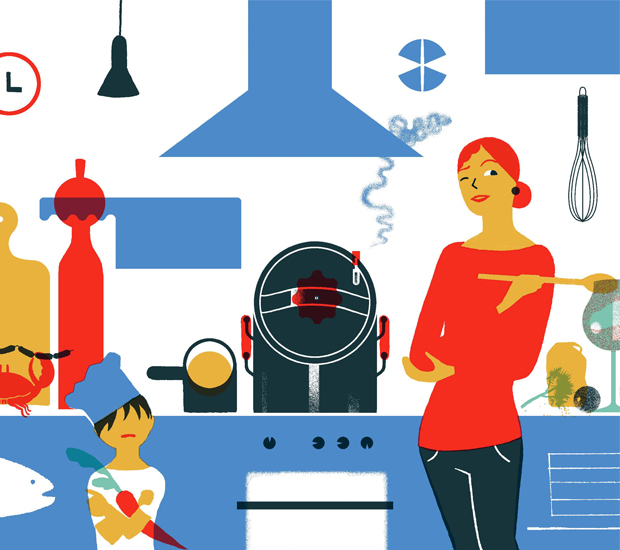
Parisian food writer Clotilde Dusoulier on recipe adaptation
The French home cooking expert converts traditional French dishes for modern cooks
I’ve always been drawn to time-honoured cookbooks, so I couldn’t have been happier to work on the English adaptation of Je Sais Cuisiner (I Know How To Cook), a classic and best-selling book on French home cooking that was first published in 1932.
Its author was a Mademoiselle Ginette Mathiot, a young home economics teacher who took on the formidable task of compiling all the recipes a homemaker might need throughout her cooking life; she included nineteen hundred.
She managed to put together a book that was practical, reliable, comprehensive, and easy to use. These qualities made it an instant success, and an enduring one, too: it has since gone through multiple editions – all of them supervised by the author until she died in 1998 – and has kept selling at a steady pace through the decades.
When Phaidon approached me to see if I would take part in the English translation and adaptation of the book, I thought of my mother’s edition from the seventies, which lives in the cabinet on top of her fridge, of my grandmother’s 1930-something edition, which she kept in her nightstand, and of all the batter-stained copies I’ve seen in friends’ kitchens over the years. I said yes.
Sitting at my work table with my computer and a scatter of books, my eyes were chronically misty. Mostly it was from the dust that had gathered in the broken spine of my grandmother’s book, but I also felt rather emotional about the project: here was an esteemed book that had guided the steps of French cooks for almost eighty years, that was passed from generation to generation, and regarded as an indispensable reference book to equip anyone in the kitchen, and it was up to us to convey it to an English-speaking audience. Would Ginette approve of our work?
By “us” I mean a full team of cookery experts – one translator, three specialized copyeditors, a recipe tester, the editor at Phaidon, and myself – and our joint mission was to edit the “raw” translation of the recipes, making them more easily accessible to the modern-day, non-French reader.
In general, recipe writers in France are people of few words. Ms. Mathiot was no exception, and most of her instructions needed to be clarified and/or expanded. All the same, we wanted to preserve her voice and stay true to her intent: in this book, she does not mean to spell out every last detail for you, but rather outline the important steps, and leave non crucial elements to your judgement or preference.
Still, we did find it necessary to flesh out her writing style throughout the manuscript and, in some instances, revise the recipe altogether: for a salad of warm Crottins de Chavignol, it’s a lot neater to bake the rounds of cheese on slices of bread than directly in a baking dish – there is no smeared gooey cheese to be scraped off then – and Flemish Carbonades, a spiced beef stew from the North of France, is indubitably tastier simmered in beer, as most recipes we knew called for, rather than vinegar.
Other changes had to be made not so much for the sake of convenience or taste, but to reflect the modern lifestyle.
Take her pork rillettes, for example, a traditional pâté of slow-cooked, shredded pork meat that is very easy to make, and an emblematic charcuterie item, usually served with bread and cornichons, or stuffed in baguette for a hearty sandwich. The recipe appears in a chapter on charcuterie de ménage (house-made charcuterie, as opposed to that made by professional charcutiers), which the author notes is kept short, and focuses on those preparations that do require no special skills or equipment, and can be made at home.
The original version called for an inordinately large amount of meat, yielding over two kilograms of the finished pâté. It’s easy to imagine that this was the scale at which such recipes were made at a time when rillettes were a good way to preserve pork meat if you had it in excess, but this is neither realistic nor practical in this day and age, when this sort of recipe is perceived as a rewarding kitchen project rather than a necessity.
So we opted to reduce the quantities to a third of the original, straightened out the language and, because lard is not necessarily an easy ingredient to come by, added the option to use butter instead.
With this line of editing, I feel we achieved our goal: to handle Ginette Mathiot’s opus with the respect it deserves, and make it accessible to a new audience without altering its essence.
Try these classic French recipes
Clotilde Dusoulier is the author of two cookbooks and the blog Chocolate & Zucchini